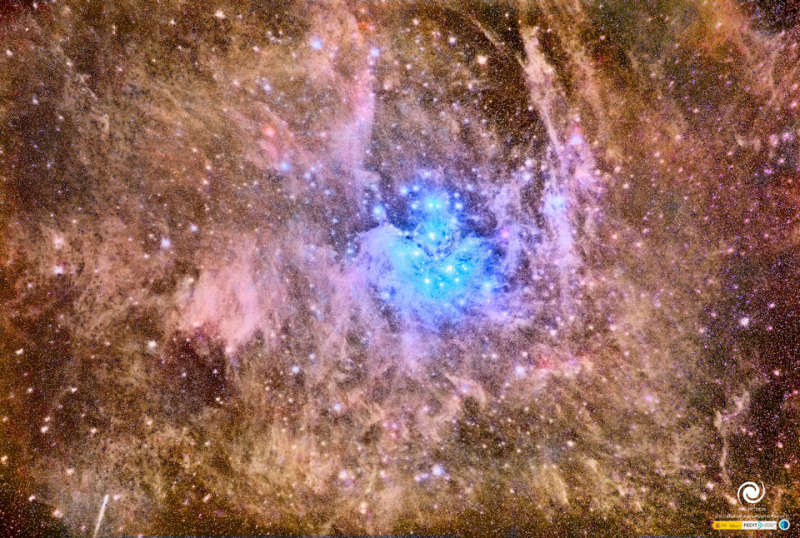
|
Credit & Copyright: Juan Carlos Casado
(TWAN,
Earth & Stars),
Miquel Serra-Ricart & Daniel Padron,
FECYT
Explanation:
The well-known Pleiades star cluster is slowly destroying part of a passing cloud
of
gas and dust.
The Pleiades
is the brightest
open cluster of stars
on Earth's sky and
can be seen from almost any northerly location with the
unaided eye.
The passing young dust cloud is thought to be part of
Gould's Belt, an
unusual ring of young star formation surrounding the Sun in the
local Milky Way Galaxy.
Over the past 100,000 years, part of
Gould's Belt
is by chance moving right through the older
Pleiades and is causing
a strong reaction between
stars and dust.
Pressure from the stars' light significantly repels
the dust in the surrounding blue
reflection nebula, with
smaller dust particles being repelled more strongly.
A short-term result is that parts of the dust cloud have become
filamentary and
stratified.
The featured deep image also captured
Comet C/2015 ER61
(PanSTARRS) on the lower left.
|
January February March April May June July August September October November December |
| ||||||||||||||||||||||||||||||||||||||||||||||||
NASA Web Site Statements, Warnings, and Disclaimers
NASA Official: Jay Norris. Specific rights apply.
A service of: LHEA at NASA / GSFC
& Michigan Tech. U.
Based on Astronomy Picture
Of the Day
Publications with keywords: pleiades - star cluster - dust
Publications with words: pleiades - star cluster - dust
See also:
- APOD: 2025 August 28 Á Galaxies, Stars, and Dust
- APOD: 2025 August 25 Á The Meteor and the Star Cluster
- APOD: 2025 July 8 Á The Pleiades in Red and Blue
- APOD: 2025 July 4 Á NGC 6946 and NGC 6939
- Young Star Cluster NGC 346
- APOD: 2025 April 8 Á Moon Visits Sister Stars
- APOD: 2025 March 5 Á Seven Sisters versus California
